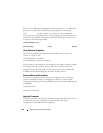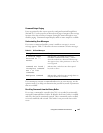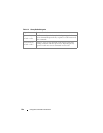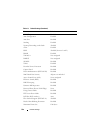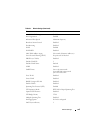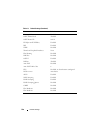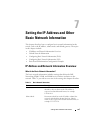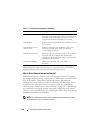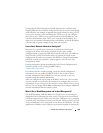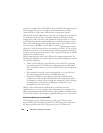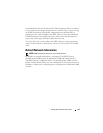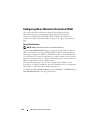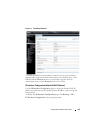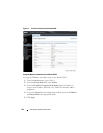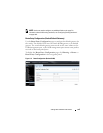
148 Setting Basic Network Information
Additionally, this chapter describes how to view host name-to-IP address
mappings that have been dynamically learned by the system.
Why Is Basic Network Information Needed?
Dell Networking series switches are layer 2/3 managed switches. To manage
the switch remotely by using a web browser or Telnet client, the switch must
have an IP address, subnet mask, and default gateway. You must also
configure a username and password to be able to log into the switch from a
remote host. For information about configuring users, see "Configuring
Authentication, Authorization, and Accounting" on page 207. If you manage
the switch only by using the console connection, configuring an IP address
and user is not required. In this case, disabling the Telnet server using the no
ip telnet command is recommended.
Default Gateway Typically a router interface that is directly connected to
the switch and is in the same subnet. The switch sends
IP packets to the default gateway when it does not
recognize the destination IP address in a packet.
DHCP Client Requests network information from a DHCP server on
the network.
Domain Name System
(DNS) Server
Translates hostnames into IP addresses. The server
maintains a domain name databases and their
corresponding IP addresses.
Default Domain Name Identifies your network, such as dell.com. If you enter a
hostname and do not include the domain name
information, the default domain name is automatically
appended to the hostname.
Host Name Mapping Allows you to statically map an IP address to a
hostname.
NOTE: The configuration example in this chapter includes commands to create
an administrative user with read/write access.
Table 7-1. Basic Network Information (Continued)
Feature Description



